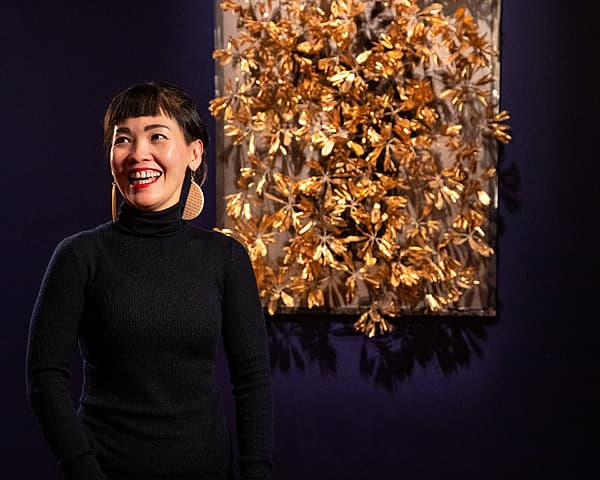Contemporary
worlds
Indonesia
Octora
Octora emerged as an artist nearly two decades after the fall of the authoritarian New Order regime in 1998 and creates works that examine the past in a meaningful way. The artist’s reappraisal of Indonesia’s colonial history comes from a gendered perspective, one that is critical of its ongoing impact on the representation of women in present-day Indonesia. Considering the intersection between sexual difference and materiality, Octora’s early body of work presented a new way of engaging with Indonesia’s past using the binary positions of materials (hard versus soft, masculine versus feminine). In her recent series, she is focused on the unstable ground between image making, official history and collective memory in Indonesia.
The series comprises five works—performance, installation and two-dimensional works—that highlight the performative nature of colonial visual culture. In the two-dimensional works, Octora looks at the relationship between photography and Dutch colonialism through the prism of Bali, using steel plates, bronze and printmaking techniques. Octora is interested in the artist’s ethical responsibility, particularly in how image making both challenges and perpetuates the circulation of visual materials from the colonial past.
Octora sourced early twentieth-century images of Balinese women from the Netherlands’ Leiden University’s online repository before replicating the pictures through digital photography using herself as the model. By inserting herself in the images, she turns back the colonial gaze through her direct stare at the viewer. In Samsara 2017, Octora takes this idea further: the ‘native woman’ is now, ironically, hidden behind exotic trappings—the photograph is pierced and obscured by ornate brass Balinese hair accessories.
In the one-hour durational performance Global apartheid voyeurism: The pose 2017, the artist strikes a pose between two reflective steel plates accompanied by a Mandarin love song ‘Love without end’ [不了情] (1961), composed by Wok Luk Ling and sung by Tsui Ping. Despite the glamorous pose, Octora’s body is supported precariously by a pair of high heels and a steel ring that encircles her neck like a Victorian posing stand. The discomfort between the artist’s unstable position and the haunting love song further illustrates the tension in the gaze and its accompanying affect.
A reflection of how the current generation of Indonesian artists engage with technologies and global issues in the art world, Octora’s works not only underline the shift from image to object, and object back to image, but also the change from material to information and from digital to analogue. Her series of works are performing objects that bind the model, the camera, the photographer and the contemporary viewer.
Dr Wulan Dirgantoro

Octora
